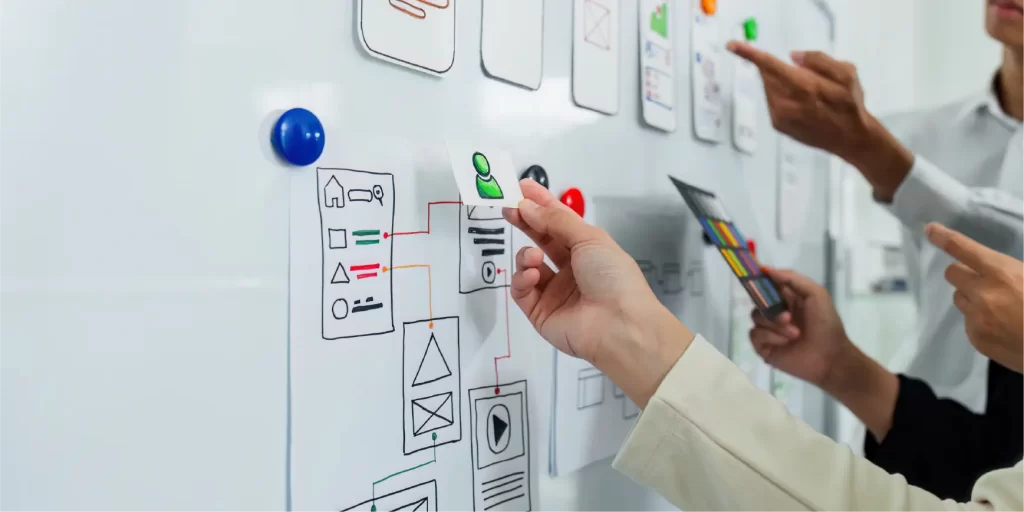Balancing User Experience and Environmental Responsibility
In the digital realm, every click, swipe, and interaction might seem insignificant. Yet, the hidden machinery that powers these seamless experiences has a profound environmental footprint. As UX designers, we have a unique responsibility—and opportunity—to design not only for optimal user experiences but also for a greener digital ecosystem. The question then arises: How can we balance efficiency, usability, and environmental impact in UX design?
The Digital Carbon Footprint – A Hidden Impact
When we think of carbon footprints, our minds often jump to industrial emissions, deforestation, or vehicular pollution. Rarely do we consider the energy-intensive world of digital interactions. However, every digital action we take, from browsing a website to streaming a video, triggers a cascade of processes in data centers around the world. These centers, brimming with servers, consume vast amounts of energy—not only to power the devices but also to keep them cool.
According to estimates, the Information and Communication Technology (ICT) sector could account for up to 20% of global electricity consumption and 5.5% of global carbon emissions by 2025. As the architects of the digital experience, UX designers influence this footprint. The decisions we make—regarding image quality, data loading, and navigation efficiency—affect how much data is processed and transmitted, impacting energy use and, consequently, the environment.
Designing for Sustainability – A UX Perspective
The good news is that sustainable design principles often align with best practices in UX. Here are some key strategies for integrating environmental considerations into UX design:
1. Optimize for Performance and Efficiency
From a UX perspective, users expect fast, responsive interfaces. Performance optimization—such as reducing load times and minimizing server requests—enhances user satisfaction. At the same time, these practices reduce energy consumption. By optimizing images, using efficient coding practices, and leveraging lazy loading, designers can create interfaces that are both user-friendly and eco-friendly.
Environmental Impact: Optimized websites and applications require less energy to load and run. This reduction in data processing and transmission translates directly to lower carbon emissions, particularly when multiplied across millions of users.
2. Structured Navigation and Content
Clear, concise navigation is a cornerstone of good UX. It helps users find what they need quickly, reducing frustration and improving overall experience. From an environmental standpoint, streamlined navigation also means fewer page loads and data requests, reducing the cumulative energy demand.
Environmental Impact: By simplifying content and reducing the number of steps needed to achieve a task, designers can decrease the amount of data transmitted and processed, thus lowering the overall energy footprint of digital products.
3. Prioritize Minimalist Design
Minimalist design is more than just an aesthetic choice; it’s a functional approach that emphasizes clarity, simplicity, and efficiency. By focusing on the essentials and removing unnecessary elements, designers can create cleaner, faster-loading interfaces.
Environmental Impact: Minimalist designs typically use fewer resources. Less clutter means fewer elements to load, lower data use, and reduced energy consumption. This not only improves usability but also aligns with sustainable practices.
4. Adopt Sustainable Coding Practices
Efficient code is crucial for both performance and sustainability. As designers, collaborating closely with developers to ensure that the codebase is lean and efficient can significantly reduce energy consumption. Techniques like code minification, using asynchronous loading, and reducing reliance on heavy libraries contribute to a more sustainable digital product.
Environmental Impact: Sustainable coding practices reduce the computational power required to run digital products. This efficiency cuts down on energy use, contributing to lower emissions from data centers.
Moving Forward – Elevating the Eco-Friendly UX Mindset
Shifting towards eco-friendly UX design is a journey, not a destination. It starts with small, incremental changes that collectively make a significant impact. Whether it’s compressing images, simplifying design, or advocating for efficient coding practices, every step towards sustainability matters.
By expanding our focus beyond usability and aesthetics to include sustainability, we not only enhance the quality of our digital products but also contribute to a more sustainable future. This dual commitment to user experience and environmental responsibility is not just a trend but a necessary evolution in the field of UX design.
In the end, the goal is to create digital experiences that delight users while respecting our planet’s resources. As designers, we have the power to shape this future—one pixel, one click, one user journey at a time. Let’s embrace this responsibility and lead the way towards a more sustainable digital landscape.

